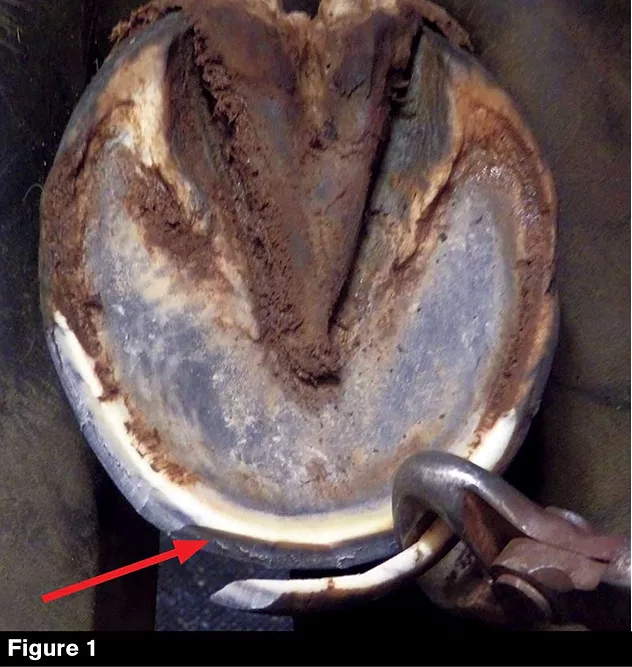American Farriers Journal
American Farriers Journal is the “hands-on” magazine for professional farriers, equine veterinarians and horse care product and service buyers.

Nippers are used at a vertical angle starting the cut dorsal to the white line. This will create a thin mound of hoof wall and a thin white line (red arrow) on the bearing border of the foot.
The equine foot with healthy structures is superior in its barefoot state with regard to accepting weight, dissipating the energy of impact and absorbing concussion.1 Furthermore, the structures of the foot have an inherent ability to change, strengthen and improve over time by the process of adaptation.1 Shoes are applied to prevent wear, add traction and provide a means to apply therapeutic farriery when necessary. As a farrier and veterinarian, I have always been a proponent of allowing a horse to remain barefoot or compete barefoot when possible.2
When given the opportunity and time, I try to rehabilitate distorted or compromised feet, especially the palmar/plantar section of the foot, in the barefoot state.2 Still, to be clear, I also believe a horse can be trimmed and shod in a proper physiological manner with minimal damage to the hoof capsule.3,4 The advances in synthetic and deformable footing at competitions and on farms have allowed many horses to compete barefoot. At the 2021 Olympic Games in Tokyo, Japan, the Swedish show jumping team won the gold medal, competing with their horses barefoot, creating a renewed interest in this farriery option…